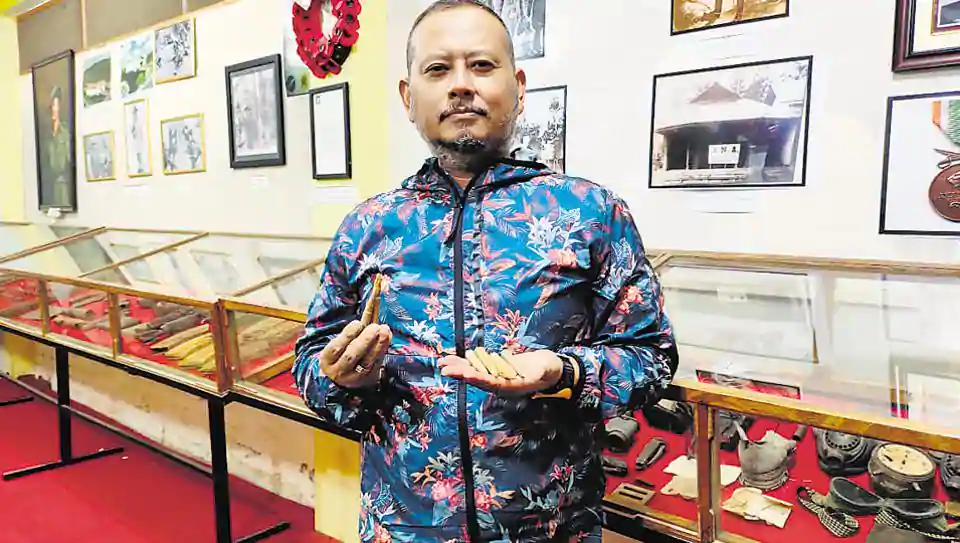
SOURCE: Hindustan Times
Fifteen years ago, Arambam Angamba Singh, then a young Manipuri civil engineer aged 33, made a difficult decision. On his desk at work were project documents for a building whose technical aspects he was supposed to supervise. Back home, in a drawer, was a gift from a friend — a World War 2-era Japanese light machine gun used in the Battle of Imphal-Kohima. The friend had found it while on a trek not far from their neighbourhood.
The documents on his desk were Singh’s job; but he couldn’t shake the feeling that in the rusty gun lay a future. He stayed at his desk that day, and for eight years after that.
Finally, in 2013, he quit the job and gave his life, as it were, to the gun. He became a self- taught researcher of military history and now spends his days living his dream, scouring the remains of battlegrounds across Manipur for war relics.
He and his team of volunteers (mainly students, a few businessmen with time to spare, all amateur history buffs) have collected over 200 objects across seven years —helmets, bayonets, water canteens, spent grenades, pieces of worn-out battle fatigues, medals and gas masks, artillery shells. They’ve also found photographs, diaries, keepsakes.
Their finds come from across five major war sites in Manipur (Nungshigum, Kanglatongbi, Shangshak, Tengnoupal and Bishenpur), all of which were battlegrounds in the Imphal-Kohima war. Some of the objects Singh keeps in a private museum he has built in his home in Imphal; some are at the Imphal Peace Museum just outside the city.
In the Battle of Imphal-Kohima, 1944, over 50,000 Japanese died or went missing; the British Indian army that included Manipuris and soldiers from Britain’s African colonies suffered over 16,000 casualties. It is memorable also because had Imphal fallen, the British — who had already lost Burma — might have lost much if not all of India to the Axis forces as well.
Relic hunting, Singh says, has made him realise that there are no wins, only losses in a war. “I once found a family photograph of an unknown Japanese soldier. That kind of thing stays with you. I wonder from time to time if he ever got back home…”
Last year, Singh launched Battle Tours — four- and five-night trips to a range of sites, booked mainly by foreigners who had family members fight in the war. He says he is happy to have made a career out of something he loves, and to be spreading his message of peace to all who visit.
In 2013, the year he quit his job, Singh also co-founded the Second World War Imphal Campaign Foundation (ICF), to promote study of these sites and draw more scholars from around the world to them.
“Sometimes, Arambam gets requests to find a missing relative’s grave,” says Lina Moirangthem, 27, a PhD student associated with the ICF. “Whenever he and his team have found a relic like a photograph, a diary or other personal belongings, they have put word out through war commissions and foundations to try and reach the families. Over the years, in this way, word has spread about the project too.”
Singh’s dream now is to see a trickle of scholars turn into a stream.
“We had a bona fide World War 2 battle right here on our doorsteps,” he says. “But this significant event is not even mentioned in our school textbooks. Manipuri civilians died in air raids. Families were devastated and displaced. You go for a walk in the forest or dig at a site to build a house and war relics like a bullet or a gun or a grenade lobbed by the British army or the Japanese are everywhere. Keeping this history alive is important.”






